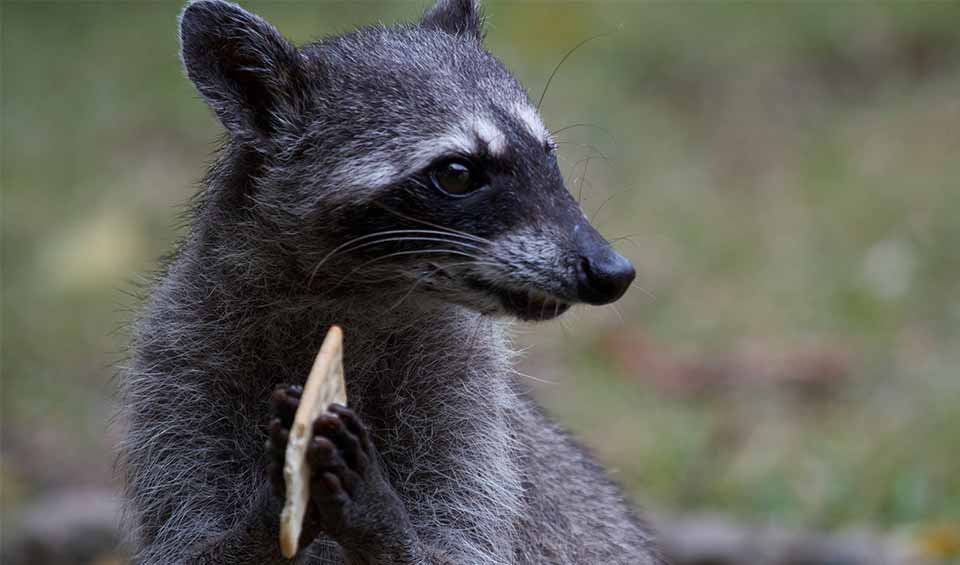Bearing the recognizable facial mask and ringed tail characteristic of raccoons, this species has nuanced differences, such as the orientation of fur on the nape, which points forward, setting it apart visually from its more widely known cousin. The coloration of their coat, primarily brownish-grey with dark-brown legs and feet, camouflages them in their natural habitat, aiding in their nocturnal foraging activities.
Adaptations to a nocturnal lifestyle have significantly shaped the sensory capabilities of the crab-eating raccoon. Though color blind, a common trait among many nocturnal animals, they possess exceptional night vision. This adaptation is crucial for their survival and proficiency as nighttime hunters, allowing them to navigate and forage effectively in the dimly lit environments of their habitats.
Distinguished by their dietary preferences, crab-eating raccoons have evolved specific physical traits to exploit a niche that involves consuming hard-shelled aquatic prey. Their large cheek teeth are not just robust but are also equipped with rounded and broad cusps, making them highly effective at cracking open the shells of crustaceans and shellfish. This dental adaptation underscores their specialization in a diet that includes crabs, crayfish, lobsters, and various shellfish such as clams and oysters, distinguishing their feeding habits from other raccoon species.
The crab-eating raccoon’s diet reflects not only an adaptation to their environment but also their role within the ecosystem. By preying on a variety of crustaceans and shellfish, they help maintain the balance of aquatic life in their habitats. This role as a predator highlights the interconnectedness of species within ecosystems and the importance of each species in maintaining ecological health and stability.
Living along riverbanks, coastal areas, and mangroves in Central and South America, crab-eating raccoons have mastered navigating terrestrial and aquatic environments. Their adept swimming skills complement their ability to forage along the water’s edge, showcasing their versatility as predators.
Distribution
 Argentina
Argentina Bolivia
Bolivia Brazil
Brazil Colombia
Colombia Costa Rica
Costa Rica Ecuador
Ecuador French Guiana
French Guiana Guyana
Guyana Panama
Panama Paraguay
Paraguay Peru
Peru Suriname
Suriname Trinidad & Tobago
Trinidad & Tobago Uruguay
Uruguay Venezuela
VenezuelaAnything we've missed?
Help us improve this page by suggesting edits. Glory never dies!
Suggest an editGet to know me
Terrestrial / Aquatic
Altricial / Precocial
Polygamous / Monogamous
Dimorphic (size) / Monomorphic
Active: Diurnal / Nocturnal
Social behavior: Solitary / Pack / Herd
Diet: Carnivore / Herbivore / Omnivore / Piscivorous / Insectivore
Migratory: Yes / No
Domesticated: Yes / No
Dangerous: Yes / No





